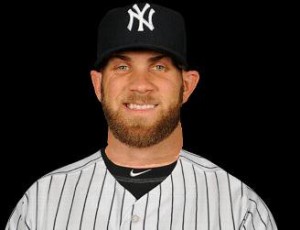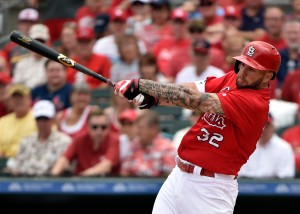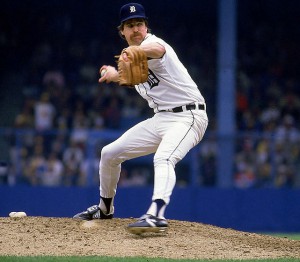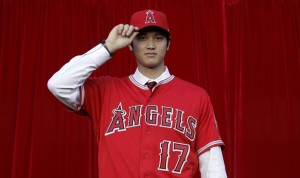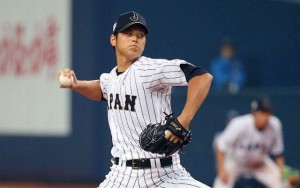In this slow baseball off-season news cycle, anything is good. We’ve signed a handful of MLFAs, some of which may even contribute, and we’ve fortified a couple of known roster spots. But nothing major has happened really (at least not to us).
Lets check in with mlb.com Nats beat reporter Jamal Collier, who posted a mailbag today on 12/28/17.
Q: What’s the impact of the Stanton to Yankees on Bryce’s next deal and potential for remaining with Nats?
A: I think its significant, and combined with a couple of other factors may actually help convince Bryce Harper to stay put.
First, the players union focused all its efforts on the Qualifying Offer in the most recent CBA negotiations and gave up a huge concession in form of the luxury tax implementation. Now, it isn’t a “salary cap” but it sure is acting like it. When your biggest spenders (Yankees and Dodgers) are playing payroll games in order to get under neath the threshold … its serving as a defacto cap. And it should be noted the Union did not get a corresponding “floor” … meaning that team after team will be punting on seasons ala Houston and Chicago and not spending money, thus bringing the FA spending down. This situation will only continue into next off-season, which is setup to be the greatest Free Agency bonanza ever. But are all these 2018 FAs fooling themselves into thinking they’re going to get the money they’re seeking? You can already see the impacts; there’s been almost no movement in the 2017 FA market and I suspect that mid-level guys are going to get completely screwed.
Meanwhile, the Yankees have now committed $30M/year to an outfielder who basically plays the same position as Harper in Giancarlo Stanton. And even the Yankees still need to find money to pay for pitching. Can you field a competitive team with a thinned farm system and two players accounting for nearly half your payroll? I don’t think you can. Where would you even put Harper? He’d have to commit to playing CF with Stanton and Aaron Judge in the corners … that’s a lot of power in the outfield yes .. but also not a ton of defense.
Lastly, there’s already rumors (a comment from a connected blogger recently) who is hearing that Harper may very well stay put. And why not? Thanks to a middling division filled with teams going in the wrong direction and a relatively young team with key players locked up … Washington isn’t the worst place to hang your hat for a while. We offer him a deal with an opt out perhaps in 3-4 years, when he won’t even be 30 yet, and he’ll have another bite at the apple.
So, maybe Harper is going to be wearing the curly-W a while longer.
Collier thinks the Yankees are less obvious of a suitor … but that anything could happen.
Q: Should we read much into the lack of a Rizzo extension, or is it something that the Lerners would be more likely to do this summer (assuming everything is going well in-season)?
A: I wouldn’t read anything into the lack of movement; I continue to think the Lerner group treats its baseball employees no differently than its regular construction business employees, and have no issue letting employees go to the end of their deals before renewing.
Collier says the same.
Q: With news breaking of Realmuto wanting out of Miami, could you see the Nationals making a push for the young catcher?
A: Nope. Nats are already overspending at the position and are going to be hoping for a Ryan Zimmerman-esque bounce back year from Matt Wieters. And with them being so close to the luxury tax already (if not over it), I can’t see them spending even more money at a position where they’re already spending significant dollars. I just don’t see this team throwing good money after bad at the catcher position.
Collier basically the same.
Q: I have to say that one of my biggest concerns with the new coaching staff is the absence of Davey Lopes. This is a team that should be using speed as a primary weapon, and Lopes’ coaching was essential to the younger speedsters on this team. Can you reassure me that both the coaching staff and Martinez will still buy into this approach and that they have the tools to make good on the potential headaches for opposing pitchers and defenders?
A; I dunno how anyone can make that claim honestly. The only thing we have to go on is Joe Maddon‘s approach; will Dave Martinez use the same? It will be a wait and see thing.
Collier thinks they’ll stay aggressive.
Man, that was kind of a lame mailbag. No hot takes, nothing controversial. We need some stuff to argue about.
Thankfully …. Hall of Fame voting is next week. Can’t wait.
